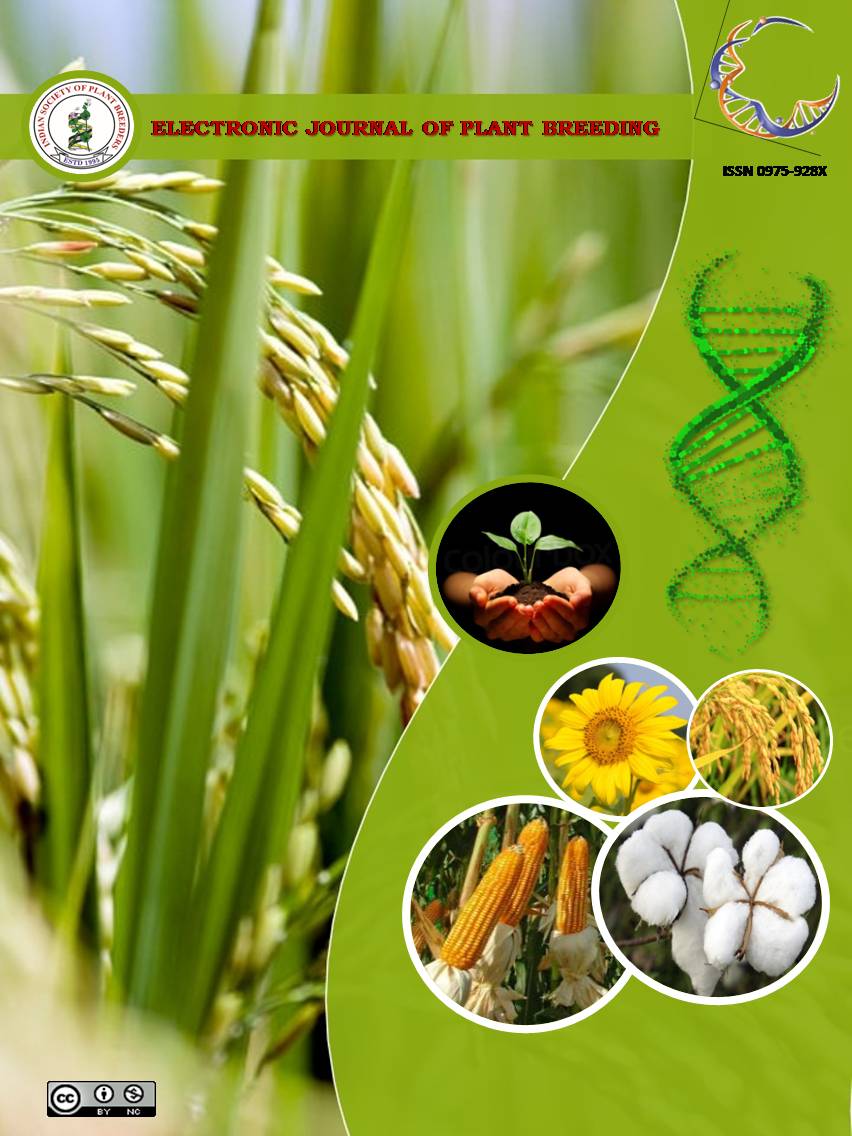Gamma ray induced genetic improvement of sorghum landraces for grain yield and charcoal rot tolerance
Abstract
Sorghum is an important cereal crop used for food, livestock feed and biofuel. In order to improve rabi sorghum (post-rainy season), which are mainly used for human consumption, physical and chemical mutagens are used to create genetic variability for quantitative traits. Two advanced sorghum mutant populations, TJP 1-5 and TC-2 were subjected to gamma ray irradiation (300 Gy) and treated with 0.2% EMS. Selections were carried out for grain yield and charcoal rot tolerance from M2 generation onwards along with check varieties. In M3 generation, 300 mutant lines were selected and screened for charcoal rot disease using tooth pick method. Based on the field screening, TCM-38, TCM-95, TJM-6-1 and TJM-35 showed less sclerotial growth (1.92, 2.08, 1.92 and 1.61 nodes crossed respectively) with high grain yield. Among all the mutants screened, TJM-35 had least mean length of fungal growth (13.47 cm) which translated into less lodging (21.74%) and better grain yield (2583 kg/ha) compared to check. Wide genetic variability was created for grain yield (354-2874 Kg/ha as against SPV-86 check, 1499 kg/ha) with mean value of 1833 Kg/ha). Among all the mutants studied, TJM-35, TJM 6-1 and TCM-95 were not only high yielding but also possess tolerance to charcoal rot disease.

It is certified that:
- The corresponding author is fully responsible for any disputes arising due to the publication of his/her manuscript.
- The article has been seen by all the authors who are satisfied with its form and content.
- The sequence of names of authors in the by-line is as per their relative contribution to this experiment, giving due credit to all scientists who made notable contribution to it.
- All the authors fully understand that inclusion of any other co-authors or exclusion of any co-authors is not possible once the article has been submitted to the journal.
- The corresponding author takes full responsibility for this article.
- The address of the organization where the research was conducted is given.
- The article is exclusive for this journal, and the results reported here have not been sent (and will not be sent during its consideration by this journal) for publication in any other journal.
- Authors agree to abide by the objective comments of referees and do agree to modify the article into a short note as per the recommendation, for publication in the Electronic Journal of Plant Breeding.
- If published in Electronic Journal of Plant Breeding, the copyright of this article would vest with the Indian Society of Plant Breeders, who will have the right to enter into any agreement with any organization in India or abroad engaged in reprography, photocopying, storage and dissemination of information contained in it, and neither we nor our legal heirs will have any claims on royalty.


